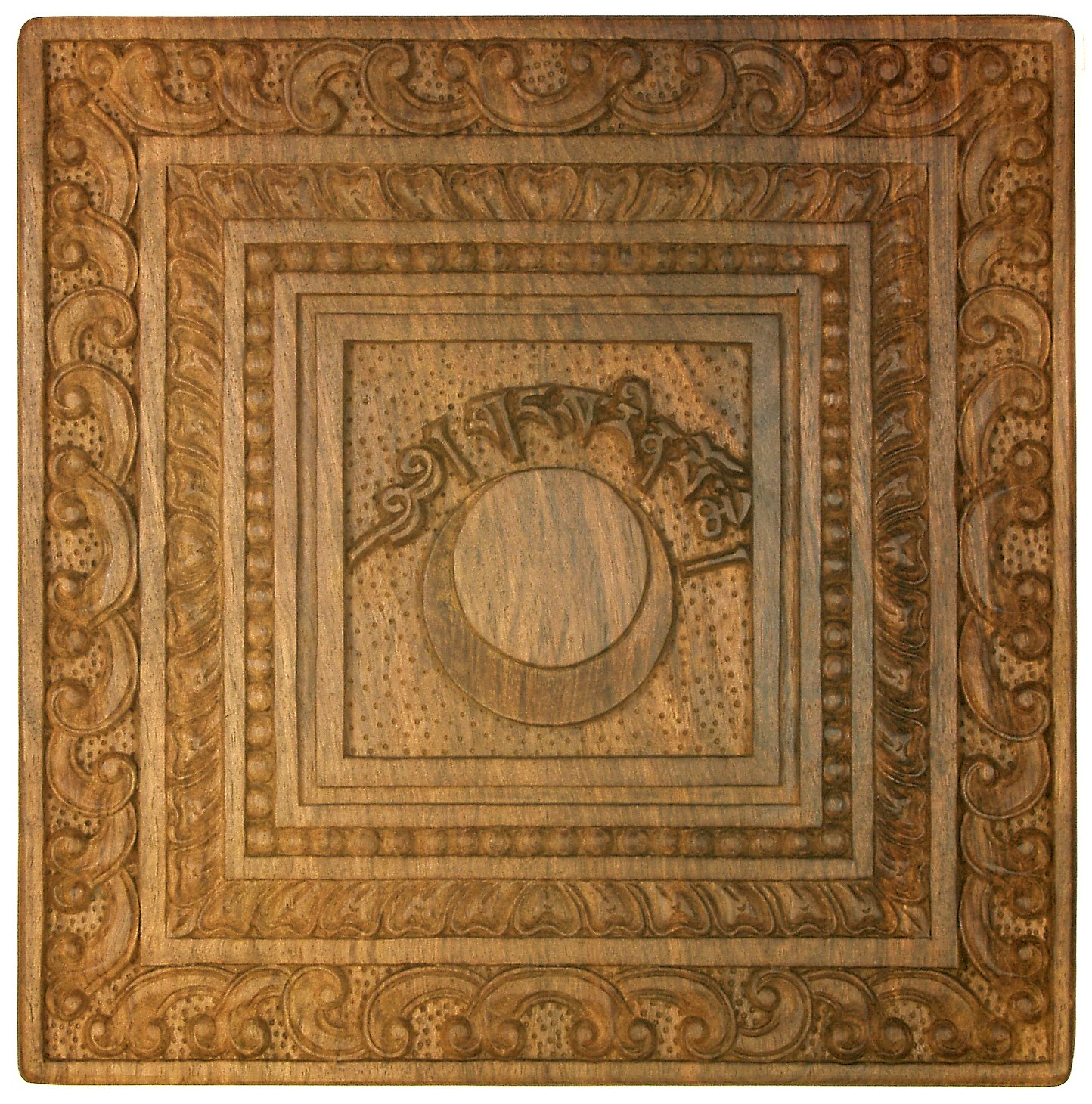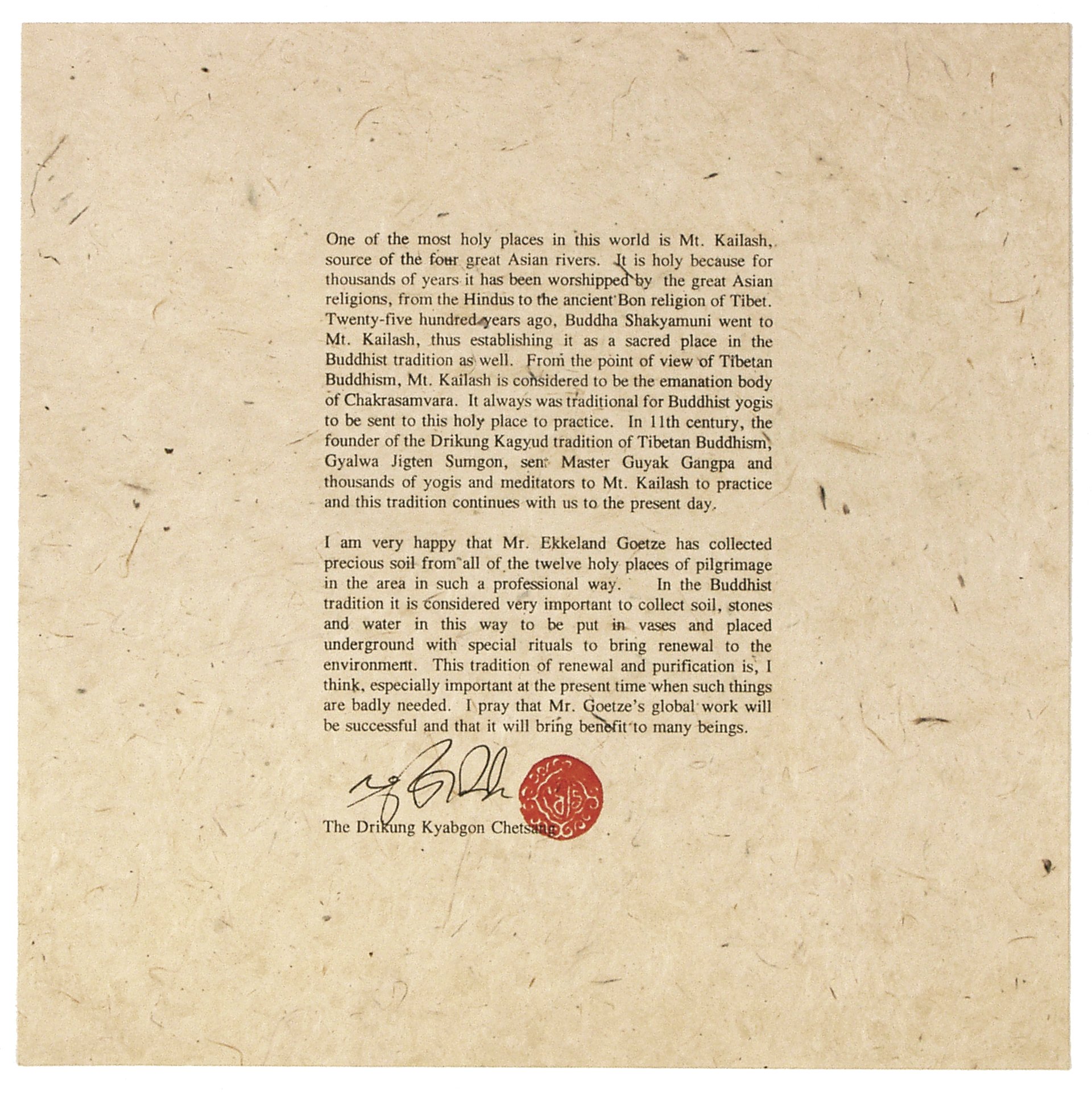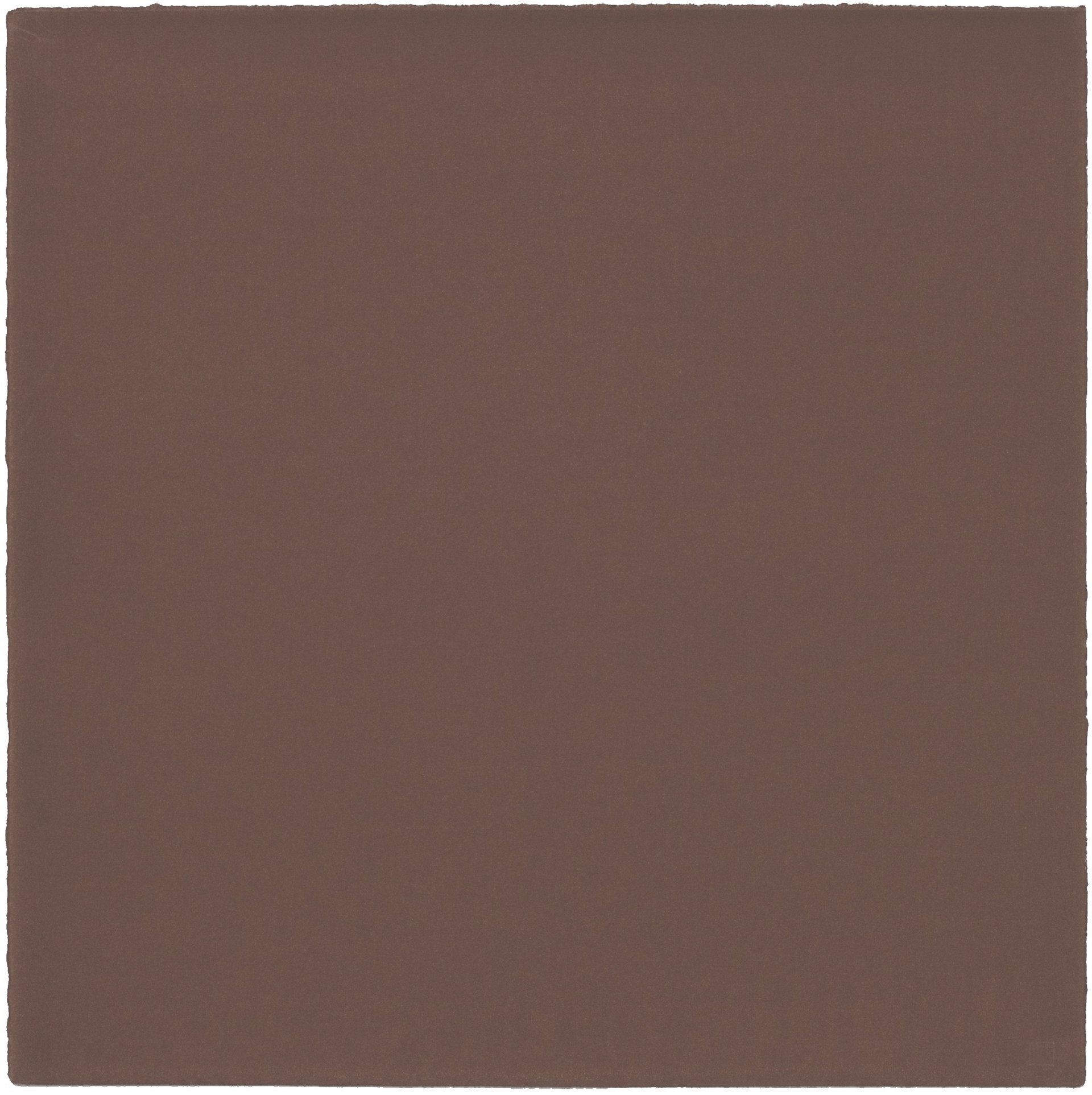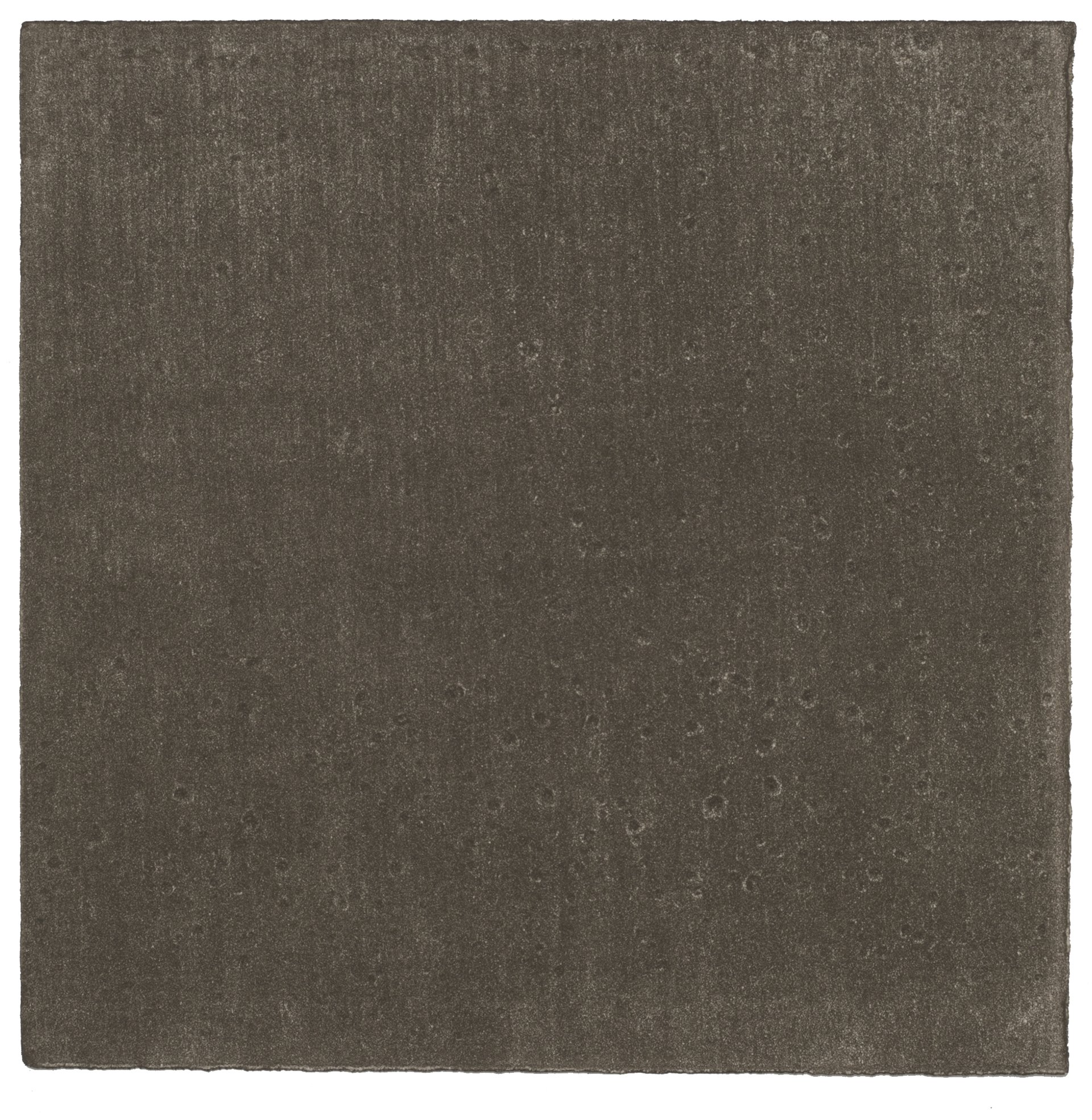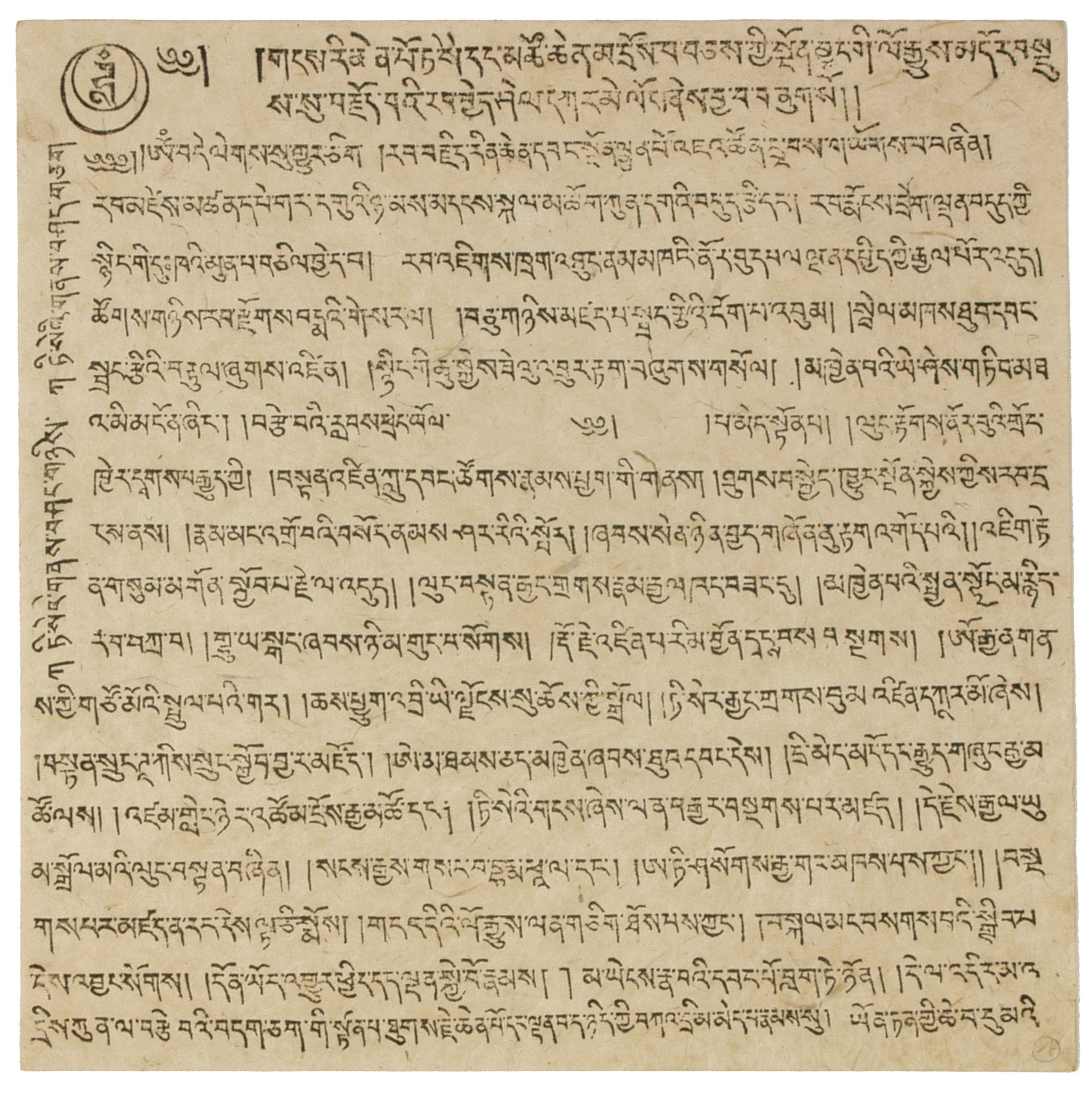with the blessings of h.h. 37. drikung kyabgong chetsang rinpoche, ekkeland götze wandered round kailas, the most sacred mountain, the centre of the world, on the kora, the path used by pilgrims since ancient times. between august 13th and 16th, he collected 12 soils. the 12 resulting earth art works that form the heart of this 'tibetan book' were printed by himself on bfk rives 300 gsm.
they are complemented by four pages of text, selected by drubpoen sonam jorphel rinpoche in kathmandu from the book 'the perfect clear crystal mirror – a short summery from the history of the early events at the kailash and manasarovar' by h.h. choekyi lodroe, the 34. drikung kyabgoen chungtsang rinpoche (1868 - 1906). the text was completed in kakhschoung, kailas, on the first day of the 12th tibetan month of 1896, the year of the fire-monkey.
these four pages of text were cut by hand into wooden printing blocks in kathmandu and then printed on lokta paper 80 gsm. this paper is obtained from the bark of the daphne-bush growing in the himalaya and is traditionally hand-dipped. jimmy thapa organized and supervised the production of these pages.
tara kokta, kathmandu, translated them into german, louise patterson, munich, into english. the handwritten blessing of h.h. the ivx. dalai lama, the preface by h.h. drikung kyabgong chetsang, the conceptual framework, the translations, the map of the pilgrims' path, the list of excavation sites and the imprint were all printed on lokta paper by e.g as well. the wooden book covers were designed by jimmy thapa according to ancient tibetan books. under his supervision, they were then handcarved in kathmandu from wood of seasum-trees from lumbini, buddhas birthplace.
jimmy thapa also contributed his own view on the project on one page of description of the kailas project. the book in 36 x 36 cm format, wrapped in chinese silk, was printed in an edition of 108 copies. for tibetans, this number has special significance: the translation of buddha's writings into tibetan consists of 108 volumes; major monasteries have 108 rooms; prayer chaplets contain 108 beads and women’s hair is plaited into 108 plaits. finally, after 108 pilgrimages around kailas, the pilgrim is free to enter nirvana.
ekkeland götze, 1999

